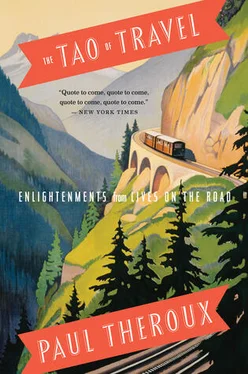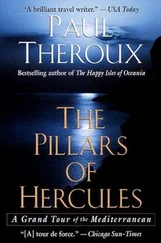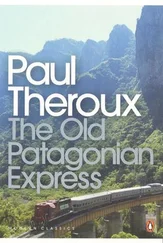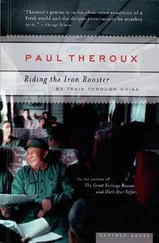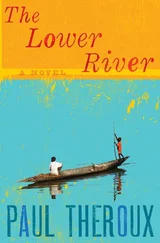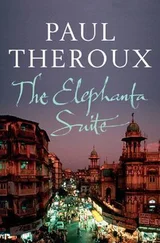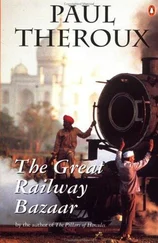The Traveller's Tree by Patrick Leigh Fermor
WHAT is IMPRESSIVE about this book is its completeness, its humane assessment of the Caribbean islands and their people, and its elegance — an evocative as well as droll appreciation of a vast area. The book is now sixty years old, and so it is also an album of pretty pictures about places that are different, some of them much changed, many of them no longer pretty at all. Haiti comes to mind. In Leigh Fermor's view, Haiti is old-fashioned and proud, lovable, beauteous, cultured, a bit severe — a far cry from the hellishly poor and devastated country of today, the victim of dictatorships, hurricanes, famine, disease, and most recently one of the worst earthquakes in human history.
So The Traveller's Tree is dated ("Negroes," "aerodrome," "luncheon"), but all the more valuable for that, because it is in the nature of a travel book, especially an expansive one like this, to serve as a history of a region, noting manners and customs, language and cuisine. He traveled in Trinidad in 1947–48, when V. S. Naipaul was a high school student, before Graham Greene went to Haiti, and around the time Ian Fleming became resident in Jamaica. For many travel writers, Patrick Leigh Fermor is everything a travel writer ought to be — urbane, well read, witty, forgiving, well traveled, and a meticulous observer. His writing is magical, his eye is unerring, and so is his ear — for human speech, for music, for the sound of the sea and birdsong, for the feel of a place. And his barbs tend to be elegant: "Hotel cooking in the island [Trinidad] is so appalling that a stretcher may profitably be ordered at the same time as dinner."
Here, having just landed in a Haiti that is no more, Leigh Fermor is traveling up the main road toward Port-au-Prince in an old wagon. "These black and obsolete vehicles are drawn by horses on the point of death and driven by very old men." He goes on:
The cane-field and savannah turned into the outskirts of the capital. Thatched cabins straggled into the country under the palm trees, and multiplied into a suburb, through which the road ran in a straight, interminable line. For the first mile or so, the town consisted entirely of rum shops and barbers' saloons and harness makers. Hundreds of saddles were piled up in the sunlight. Bits and bridles and saddlebags hung in festoons. There were horses everywhere. Our equipage churned its way upstream through a current of horses and mules ridden by Negroes who straddled among bulky packages, all heading to their villages with their purchases for Christmas. One or two were singing Haitian meringues, and several were carrying game cocks under their arms, lovingly stroking their feathers as they trotted past. Old women, puffing their pipes, jogged along side-saddle. They had scarlet and blue kerchiefs tied round their heads in a fortuitous, rather piratical fashion, half covered by broad-brimmed straw hats against the sun. The sides of the road pullulated with country people chattering, drinking rum, playing cards and throwing dice under the trees. The air was thick with dust, and ringing with incomprehensible and deafening Creole. I felt I might like Haiti.
Italian Hours by Henry James
"VENICE WAS ONE of the greatest topographical love affairs of James's life," Leon Edel, his biographer, wrote. For Henry James, Venice was everything he wished for in a distant city — villas facing onto the canals, churches crammed with Renaissance masterpieces, great food, voluble people, and in his time not expensive. He called it "the repository of consolations." A number of his fictions are set in Venice, The Aspern Papers among them, and he wrote several of his novels there, notably The Portrait of a Lady, which is set in England and in Rome and Florence. Italian Hours (1909) sums up James's love of Italy, and particularly Venice, as in this dense and appreciative paragraph:
One may doubtless be very happy in Venice without reading at all — without criticizing or analyzing or thinking a strenuous thought. It is a city in which, I suspect, there is very little strenuous thinking, and yet it is a city in which there must be almost as much happiness as misery. The misery of Venice stands there for all the world to see; it is part of the spectacle — a thoroughgoing devotee of local colour might consistently say it is part of the pleasure. The Venetian people have little to call their own — little more than the bare privilege of leading their lives in the most beautiful of towns. Their habitations are decayed; their taxes heavy; their pockets light; their opportunities few. One receives an impression, however, that life presents itself to them with attractions not accounted for in this meager train of advantages, and that they are on better terms with it than many people who have made a better bargain. They lie in the sunshine; they dabble in the sea; they wear bright rags; they fall into attitudes and harmonies; they assist at an eternal conversazione. It is not easy to say that one would have them other than they are, and it certainly would make an immense difference should they be better fed. The number of persons in Venice who evidently never have enough to eat is painfully large; but it would be more painful if we did not equally perceive that the rich Venetian temperament may bloom upon a dog's allowance. Nature has been kind to it, and sunshine and leisure and conversation and beautiful views form the greater part of its sustenance. It takes a great deal to make a successful American, but to make a happy Venetian takes only a handful of quick sensibility. The Italian people have at once the good and the evil fortune to be conscious of few wants; so that if the civilization of a society is measured by the number of its needs, as seems to be the common opinion to-day, it is to be feared that the children of the lagoon would make but a poor figure in a set of comparative tables. Not their misery, doubtless, but the way they elude their misery, is what pleases the sentimental tourist, who is gratified by the sight of a beautiful race that lives by the aid of its imagination. The way to enjoy Venice is to follow the example of these people and make the most of simple pleasures. Almost all the pleasures of the place are simple; this may be maintained even under the imputation of ingenious paradox. There is no simpler pleasure than looking at a fine Titian, unless it be looking at a fine Tintoretto or strolling into St. Mark's, — abominable the way one falls into the habit, — and resting one's light-wearied eyes upon the windowless gloom; or than floating in a gondola or than hanging over a balcony or than taking one's coffee at Florian's. It is of such superficial pastimes that a Venetian day is composed, and the pleasure of the matter is in the emotions to which they minister. These are fortunately of the finest — otherwise Venice would be insufferably dull. Reading Ruskin is good; reading the old records is perhaps better; but the best thing of all is simply staying on. The only way to care for Venice as she deserves it is to give her a chance to touch you often — to linger and remain and return.
The Autobiography of an Unknown Indian by Nirad C. Chaudhuri
AT THE AGE of fifty, a scriptwriter for All-India Radio, not having published any book, Chaudhuri was possessed by a revelation. "It came in this manner," he wrote. "As I lay awake in the night of May 4–5, 1947, an idea suddenly flashed into my mind. Why, instead of merely regretting the work of history you cannot write, I asked myself, do you not write the history you have passed through and seen enacted before your eyes?" That enlightenment came three months before India's independence. He set about immediately, struggled with some chapters, then hit his stride; and the result is a masterpiece, The Autobiography of an Unknown Indian (1951) — a man in a particular place and time.
Читать дальше
